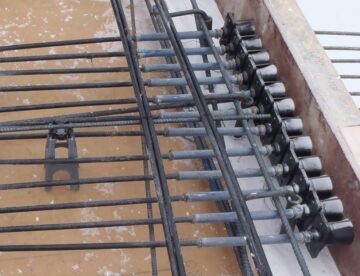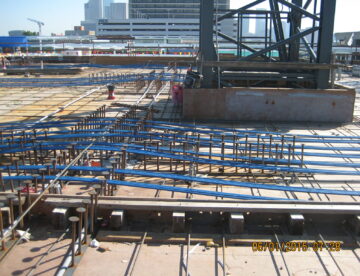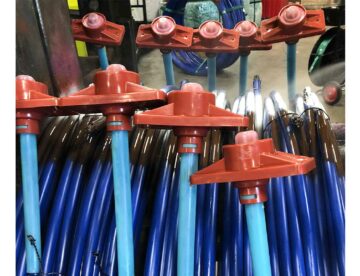
What are Loss Calculations? We’ve discussed extensively that post-tension layouts are specified by force – one way or another – and that tendons are pulled to make up these forces. We’ve also discussed that half-inch tendons are pulled to 33 kips in the field as a matter of course. We’ve also discussed that, in general,…

Tendon Encapsulation and Durability In an earlier article regarding the parts of a post-tension tendon, I discussed the specification for the grease and sheathing being designed to keep water away from the high-strength steel that makes up the structural portion of the tendon. That is not an accident – after physical damage (such as drilling…

Stressing Procedures We’ve discussed extensively that post-tension layouts are specified by force – one way or another – and that tendons are pulled by hydraulic jacks to impart these forces to the anchors and slabs. We haven’t discussed the process, and that’s fundamental to understanding post-tension installations. As we’ve mentioned before, the steel cable used…

Reading Post-Tension Plans and Shop Drawings In an earlier post, I discussed that post-tension slabs are generally thinner and have longer spans than similar conventionally-reinforced slabs. However, it stands to reason that getting that kind of performance requires careful design. Engineers spend a great deal of effort balancing concrete (which is very cheap) with more…

Bands and Uniforms – Types of Post-Tension Tendons In previous articles, I’ve discussed that engineers typically designate tendons as either a concentrated, tightly-spaced group, or as an evenly-spaced force over a large area. These directions are generally orthogonal to each other. However, it’s not immediately obvious what drives this decision. When post-tensioning was a new…
